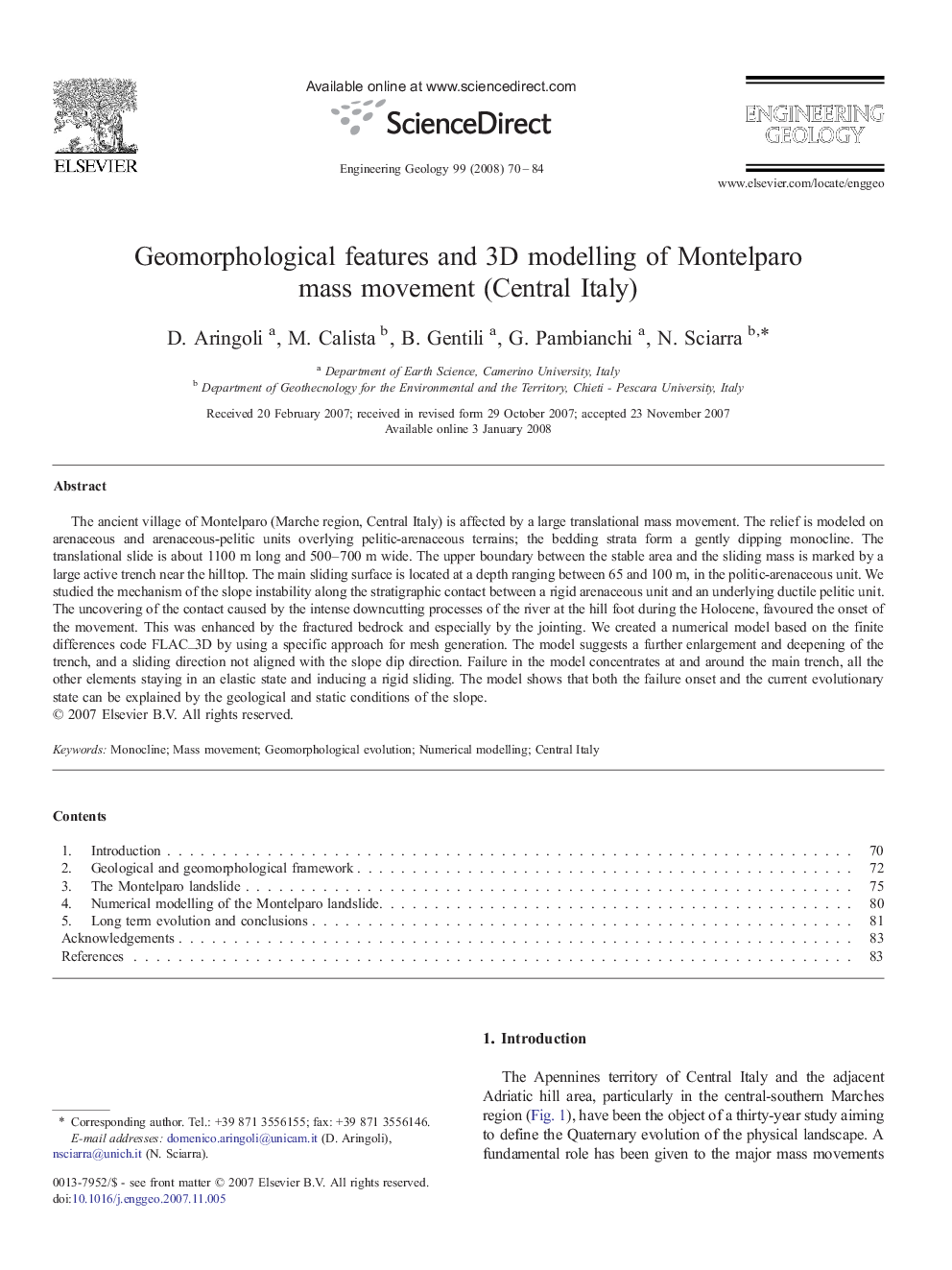| Article ID | Journal | Published Year | Pages | File Type |
|---|---|---|---|---|
| 4744885 | Engineering Geology | 2008 | 15 Pages |
The ancient village of Montelparo (Marche region, Central Italy) is affected by a large translational mass movement. The relief is modeled on arenaceous and arenaceous-pelitic units overlying pelitic-arenaceous terrains; the bedding strata form a gently dipping monocline. The translational slide is about 1100 m long and 500–700 m wide. The upper boundary between the stable area and the sliding mass is marked by a large active trench near the hilltop. The main sliding surface is located at a depth ranging between 65 and 100 m, in the politic-arenaceous unit. We studied the mechanism of the slope instability along the stratigraphic contact between a rigid arenaceous unit and an underlying ductile pelitic unit. The uncovering of the contact caused by the intense downcutting processes of the river at the hill foot during the Holocene, favoured the onset of the movement. This was enhanced by the fractured bedrock and especially by the jointing. We created a numerical model based on the finite differences code FLAC_3D by using a specific approach for mesh generation. The model suggests a further enlargement and deepening of the trench, and a sliding direction not aligned with the slope dip direction. Failure in the model concentrates at and around the main trench, all the other elements staying in an elastic state and inducing a rigid sliding. The model shows that both the failure onset and the current evolutionary state can be explained by the geological and static conditions of the slope.
